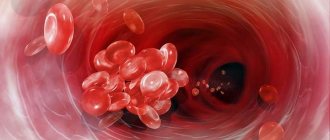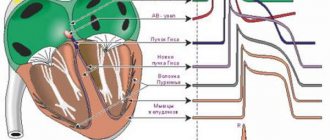Transferrin is a specific protein whose main function is to bind and transport iron to cells. The body synthesizes it in the liver from amino acids obtained from food; the brain is less involved.
Transferrin deficiency starts a dangerous chain reaction. At a minimum, the following happens. Iron ions that came from food remain unbound.
- On the one hand, in this form they are toxic. This is already a risk for the body.
- On the other hand, tissues do not receive enough iron, and degenerative phenomena begin.
If the body continues to work in this mode, dangerous forms of anemia cannot be avoided. Death is also possible.
Therefore, a lack of transferrin almost always requires correction. Since this condition is not primary: it is associated with other diseases, you need to fight the cause.
With proper and timely treatment, the prognosis is favorable. There are few truly irreparable forms of pathology; these are mainly genetic disorders and defects.
Functions and role of the element
Without normal amounts of transferrin (Tf), the body does not receive enough iron. This hits hard on all systems. Immunity decreases, the blood cannot carry oxygen due to lack of hemoglobin. This is only a small part of the problems.
The functions of the connection are not so obvious. There are many nuances that are not reflected in the name of the substance.
- The main task of transferrin is to transport iron and provide it to tissues. Indeed, this is a key function. The element enters the body in the form of ions. Positively charged particles.
They have a valency of three. That is, they can attach 3 atoms of another substance to themselves. Designated as Fe3+. In this form, free iron is dangerous for the body. These are toxic ions.
Under the influence of digestive juices and acids, the element transforms into a divalent form. Fe2+. Already in the duodenum, iron is reduced back to Fe3+, which allows it to combine with ferritin and then bind to transferrin.
In this form, the substance moves throughout the body. This is an ongoing process. Any deviations carry risks.
- Oddly enough, the compound is involved in the functioning of the immune system. Although in an indirect way. After the body begins to defend itself, transferrin moves to the site of active inflammation or other damage. It takes iron from tissues and cells.
Without this element, bacteria and other dangerous agents cannot live normally. Thus, the protein creates conditions unsuitable for the functioning of the infection.
- In addition, transferrin plays the role of a cleaner. It utilizes iron that remains after the death of red blood cells. Red blood cells are destroyed constantly and in large quantities. They leave behind iron. Transferrin collects it and uses it again.
This is important for another reason. It was previously said that ferric free iron ions are toxic. But it is in this form that the element remains after the death of red blood cells. Protein solves two problems at once.
- Transferrin is involved in providing reticulocytes, young red blood cells, with iron. He knows how to recognize these cells.
- Indirectly, substance indicators are used in diagnostics. The fact is that the concentration of the compound drops as soon as the inflammatory process begins. Moreover, there is a direct proportion: the more intense the damage, the lower the level of the substance. This is a negative, but informative phenomenon. Especially if doctors conduct in-depth diagnostics.
Transferrin also has a negative feature. With radiation damage, it intensifies radiation sickness. The fact is that siderophilin (another name for the compound) is capable of binding not only iron, but also plutonium ions.
Then it carries dangerous particles into muscle tissue, bones, and organs. This is guaranteed to increase the manifestations of radiation sickness and its severity.
Thus, the role of transferrin in the body is predominantly transport, and indirectly the substance is involved in the functioning of the immune system, hematopoiesis, and some metabolic processes.
Other important actions of transferrin in the body
This protein can not only transport metal to organs for accumulation or participate in the creation of blood cells, but also perform a number of other equally important functions:
- A completely unhelpful property of this protein component is the ability to bind to itself plutonium that has entered the body and fix it in the bones.
- It maintains a relationship with reticulocytes. These are young red cells in which hemoglobin synthesis occurs.
- Another important property of this protein is the ability to bind iron in the blood, which remains after the destruction of red blood cells. This metal in this state is very toxic, and transferrin, by binding, removes it.
- There is also a transport protein in the β-globulin fraction. This means that it participates in immune reactions to provide a response to pathogenic microorganisms that enter the body.
Transferrin is produced by human internal organs, namely the liver and brain. If there is a shortage of this substance (up to its complete absence), then we can talk about the presence of a disorder that occurs at the genetic level. This rare hereditary disease is manifested by hypochromic anemia.
When is a test ordered?
There are many indications, given the important role siderophilin plays. If we talk about the reasons for the examination:
- Frequent dizziness. Occurs in diseases for which an increase in free iron in the blood is typical. It is possible that the brain is affected. On the other hand, similar symptoms occur with element deficiency.
Since there is not enough iron, little hemoglobin is produced to carry oxygen to the central nervous system.
These tissues are very demanding on cellular respiration and nutrition. Therefore, neurological manifestations occur immediately.
Additionally, severe, regular headaches develop. Possible nausea and vomiting.
- Weakness. Asthenic syndrome. A natural continuation of the previous phenomenon. Drowsiness, a feeling of exhaustion - these symptoms are almost always caused by disorders of the brain.
Consequently, the cause must be sought in the poor supply of oxygen to cerebral structures. It may well be that transferrin is not the culprit. The doctor prescribes the analysis at his own discretion.
- Anemia. Most often iron deficiency. When the body does not receive enough substance, the production of siderophilin decreases. This is how the body saves energy.
If the element is supplied in sufficient quantity, but is not absorbed, the reverse process occurs. The concentration of free transferrin increases, which should not happen: most of the protein is in a bound state.
This is an informative technique for diagnosing anemia. But for determining its other forms: megaloblastic, etc., the method is not suitable.
- Heart rhythm disturbances. Especially if the reason for this could not be found earlier. We are talking about tachycardia (rapid heartbeat). This occurs against the background of insufficient cellular respiration of the myocardium. Muscle tissue is also extremely demanding of oxygen.
Gas transportation is impossible without hemoglobin. And the synthesis of this, in turn, without a sufficient amount of transferrin. Therefore, any rhythm deviations can occur due to siderophilin deficiency. Although this is relatively rare.
- Errors in other laboratory parameters. Especially if the number of red blood cells is changed.
- Pain in the liver.
- Disorders of the digestive tract. Occurs with excess iron. This is precisely a consequence of the fact that its toxic ions circulate freely throughout the body. Normally, almost the entire element is associated with transferrin. The disease is indicated by an excess amount of iron in the blood.
There are many indications. The list is far from complete. The doctor may order an examination for other reasons. This question is best left to the specialist himself.
Indications for prescribing a blood test for transferrin
A blood test for transferrin is needed to identify hidden iron deficiency and clarify the nature of anemia. By the amount of siderophilin you can determine:
- iron metabolism activity in the body;
- total iron reserve content;
- liver functioning.
An analysis for the amount of transferrin and ferritin is prescribed for the following symptoms:
- increased fatigue;
- dizziness and headaches;
- inability to perform usual physical activity;
- pale skin;
- loss of appetite;
- cardiopalmus;
- dyspnea.
At the same time as this test, it is recommended to do a general blood test.
Tables of norms by age
The concentration of siderophilin differs quite significantly among representatives of different sexes. There is also a difference in age. Therefore, when conducting laboratory research, all possible factors are taken into account. Those that affect the concentration of a substance.
Among women
In women, the rate of transferrin in the blood is initially almost 10% higher when compared with men and ranges from 1.7 to 3.9 grams per liter. This is understandable and due to physiology.
Monthly cyclic bleeding and increased stamina. Here are the main factors that make the difference.
More red blood cells, like other formed cells, are produced. The bone marrow functions more actively. This is because women lose blood due to natural causes. If we talk about normal values:
| Age | Transferrin norm in g/l |
| 15-30 | 2.02-3.6 g/l |
| 31-60 | 2.01-3.9 g/l |
| Over 60 years old | 1.7-3.7 g/l |
Minor deviations may occur in the short term. Usually the reason for this is some natural factor. For example, nutritional errors (nutrition), stressful situations and some other points.
During pregnancy
Gestation is a particularly difficult time for a woman. The body works much more actively. The bone marrow synthesizes more cells, and iron consumption increases. After all, it is necessary to ensure nutrition and respiration of fetal tissues.
The longer the period, the higher the concentration of transferrin. The pattern is simple: in the first trimester, the norm of the substance increases by 1.2 times, by the second - by about 1.3, and by the end - by 1.5.
| Trimester | Transferrin rate in grams per liter |
| I | 2.42-4.32 |
| II | 2.62-4.68 |
| III | 3.03-5.4 |
The calculations are approximate. Based on the assumption that a woman becomes pregnant before the age of 30. It is necessary to take into account the age norm in order to draw accurate conclusions.
In men
Transferrin levels in this case will be 10% lower than those in women.
| Years | Compound values g/l |
| 15-30 | 2-3.24 |
| 31-60 | 2.35-4.2 |
| Over 60 | 2.72-4.86 |
In children
Representatives of the younger group are up to 10 years old. transferrin content does not differ much, the norm is in the range from 2.03 to 3.55 grams per liter of blood.
Up to 14 this level is slightly higher - 2.1-3.6. Then gender differences are taken into account and calculations are based on adult reference values.
Hematologist specialists interpret the results. You won't be able to draw conclusions on your own. First, laboratories use different counting techniques. And secondly, other results need to be taken into account. Results of other surveys. Without a comprehensive assessment, there is little point in diagnosis.
Transferrin saturation coefficient
The assay is an alternative method for measuring the concentration of transport protein in blood plasma.
Transferrin iron saturation coefficient (percentage) is the ratio of iron (serum) bound in transferrin to the total iron-binding capacity (TIBC).
| Age | Norm percentage of the total amount of bound protein |
| Up to 14 years old | 1o-50% |
| 15-30 | 12-50% |
| 31-60 | 15-50% |
| Over 60 years old | 8-50% |
Thus, in a healthy body, approximately 35% of Tf should be involved in binding and transporting iron to organs and tissues.
What is transferrin
Transferrin is a blood plasma protein that binds iron and transports it throughout the body. It is the main carrier of iron in the blood. If you have enough transferrin, then your body can effectively use the iron you get from your diet. [, ]
The characteristic patterns of changes that occur in the blood plasma through the concentration of certain acute phase proteins after moderate inflammation are shown. Pay attention to the duration of fibrinogen production (simultaneous increase in ESR).
Transferrin levels increase with increasing iron deficiency. When iron is low, your body will try to compensate by increasing the amount of transferrin to increase the availability of iron in tissues. [] On the other hand, the amount of transferrin decreases with increasing iron content. [, ]
Acute phase reaction. The inflammatory stimulus leads to the activation of monocytes and macrophages, which release cytokines. Cytokines act on the liver to stimulate the production of acute phase proteins. Cytokines, together with acute phase proteins, produce a systemic response with neuroendocrine, metabolic, hematological and biochemical changes. (www.researchgate.net)
Transferrin protein is produced in the liver, so its levels are also associated with overall health and general inflammation in the liver and in the body as a whole. Transferrin is a negative acute phase protein. This means that as inflammation increases, and as the liver produces more inflammatory proteins (eg, C-reactive protein , ferritin), transferrin production decreases. [,]
Scheme of iron homeostasis (iron metabolism). The central part of the figure depicts the entry of iron into the body (via the small intestine), its attachment to transferrin (TF), movement to the main site of disposal (erythroid bone marrow), attachment to circulating red blood cells, to tissue macrophages, which phagocytize red blood cells and recycle iron levels to spleen, movement for storage in hepatocytes. (www.researchgate)
Reasons for the downgrade
Transferrin concentration drops frequently. This is the main form of pathology. Raising is less typical. There can be many culprits.
Inflammatory processes
Siderophilin has an interesting feature. As soon as an infectious or autoimmune lesion begins, the protein breaks down. Therefore, its quantity in the riverbed is sharply reduced. The concentration of transferrin in the blood in this case decreases by 1.5-1.7 times. Plus or minus, depending on the severity of the pathological process.
The reason is not only the negative impact of toxins and one’s own immune cells on the protein. Part of transferrin is involved in the fight against pathogenic structures.
The concentration of the substance can be used as an indicator of the effectiveness of treatment. Although this is rather an indirect indicator, you should not rely on it alone.
Taking glucocorticoids
Synthetic hormonal drugs inhibit the functioning of the bone marrow, which is precisely the reason for the decrease in transferrin concentration.
There are few red blood cells. Hemoglobin synthesis weakens. Consequently, you no longer need as much siderophilin as under normal conditions. The protein will “stand idle”. The body tries to save energy. In this simple way, it simply optimizes its own work.
Liver pathologies
Reduced transferrin in a blood test means that the largest gland in the body is likely affected. As already mentioned, it is she who produces the substance. To a lesser extent the head is the brain.
Any, even minor, diseases cause problems. The more serious the liver pathology, the lower the siderophilin levels.
Particularly characteristic in this regard are hepatitis of various types (infectious, toxic, alcoholic) and cirrhosis. As soon as the organ begins to function normally, the amount of the substance is restored.
Oncology
A decrease in transferrin is typical for cancer processes. This is the result of exhaustion of the body. The body tries to overcome neoplasia and directs the forces of the entire immune system to solve this problem.
Hematopoiesis first becomes more intense (especially if the tumor disintegrates) and then weakens. Protein values follow these processes.
Hereditary diseases
Hemochromatosis, thalassemia. They are determined genetically. In some cases, the problem is the “defective” material of the parents. In others, the cause is a spontaneous mutation.
It is almost impossible to cope with such disorders. At least it won't be possible to eliminate the root cause. It is encoded at the core of the organism.
But there is every chance of adjusting the substance’s indicators artificially. This is a symptomatic measure, but it gives a person the opportunity to live.
Kidney pathologies
Disorders in which the body rapidly loses protein. This includes nephrotic syndromes. In this case, the reason is purely physical: there is not enough material to synthesize siderophilin, the percentage of transferrin saturation is also low.
That is, the protein that is synthesized is also not able to do its job.
Bleeding
Mechanical factor. Transferrin is released along with the liquid connective tissue. If you carry out the analysis right away, the deficiency of the substance is not surprising. After the transfusion, when only plasma was administered, nothing changes.
For some time, the saturation coefficient of siderophilin with iron, as well as its total concentration, will be below normal. The body will synthesize the substance and gradually restore its amount.
Intake of excess iron from outside
The number of ions seriously exceeds the concentration of protein units. All of Transferrin goes to work, so there is almost none left in its free form. It `s naturally. In a few days everything will return to normal on its own.
Reduced transferrin in women may be associated with a natural cycle, recent resolution of pregnancy. Otherwise, the culprits are the same.
Decreased transferrin levels
Iron overload
The most common cause of low transferrin is iron overload (excess iron). [, ]
Protein food deficiency
To produce proteins, the liver needs resources. To do this, the liver requires amino acids, which you get from your diet. When there is not enough protein in your diet, then your liver cannot produce enough transferrin. []
In studies of over 80 children who were malnourished, transferrin levels were significantly reduced. [, ]
Inflammation
As mentioned above, transferrin is a negative acute phase protein. When the liver increases the production of proteins associated with inflammation (eg, C-reactive protein , ferritin), there is a decrease in transferrin production. [,] A number of diseases, such as infections and cancer , which are characterized by an inflammatory process, can reduce transferrin levels. []
PATHOPHYSIOLOGICAL MECHANISMS OF CHRONIC ANEMIA WITH INFLAMMATION (www.scielo.br) The anti-inflammatory cytokine IL-10 regulates the expression of the transferrin receptor, enhancing its binding to iron, mediated by the monocyte transferrin receptor.
An observational study of 297 patients with active inflammatory bowel diseases ( Crohn's disease and ulcerative colitis ) found significantly lower transferrin levels. Increased disease activity and inflammation were associated with decreased transferrin levels. []
Another similar study compared 20 patients with chronic periodontitis (gum inflammation) and 20 healthy people. It has been found that people with chronic gum disease have lower levels of transferrin. Three months after treatment of inflammation, the level of transferrin in the blood increased to the values that were in healthy people. []
Preeclampsia , a condition that causes high blood pressure during pregnancy, is associated with inflammation. Women with preeclampsia often show decreased transferrin values. [, ]
Other chronic diseases leading to an increase in inflammation and a decrease in transferrin: systemic lupus erythematosus, rheumatoid arthritis , tuberculosis, bacterial endocarditis.
Liver disease
In liver disease, this organ cannot effectively produce transferrin. [] This happens when liver function is impaired by inflammation or alcohol consumption. []
Patients with liver disease , including cirrhosis, have significantly lower transferrin levels than healthy people. [, ]
Kidney disease
Nephrotic syndrome is a kidney disorder that causes too much protein to be excreted in the urine. Transferrin is one of the proteins that is excreted from the body in urine. This is why nephrotic syndrome, especially in diabetes, can exhibit significant transferrin losses. [, ] Glomerulonephritis is another inflammatory kidney disease, possibly autoimmune, leading to a decrease in transferrin values.
Genetic predisposition
Transferrin may be low due to genetic reasons. In these cases, transferrin values were in the range of 10-20 mg/dL. [, ]
Other reasons for decreased transferrin levels
- Use of corticosteroids and testosterone
- Thalassemia
- Hereditary hemochromatosis
- Loss of protein in burns
- Malabsorption syndrome
- Serum hemolysis
Reasons for the increase
Most often, an increase in concentration is due to the following factors:
- Pregnancy. Gestation, as mentioned earlier, causes an increase in the amount of siderophilin. This is normal, since the body also begins to provide for the fetus. Gradually, as the child grows, concentration increases. An increase in transferrin means that gestation is proceeding normally. Although exceptions are possible.
- The amount of the substance is affected by drugs based on female sex hormones. As well as their synthetic analogues. Generally speaking, estrogen. There is no need to do anything special. It is enough to stop taking medications or start taking other, similar medications. You cannot revise the scheme yourself. You need to see a doctor.
Transferrin may be elevated due to poor iron absorption. In this case, less than 10% of siderophilin is bound, and the rest is in a free state, which gives an increase in the indicator in the analysis.
Other abilities of the transport protein
Transferrin, having the ability to combine with ferric ions, not only delivers this metal to organs and tissues in reserve (ferritin) or to the bone marrow to participate in erythropoiesis (synthesis of the red blood pigment, hemoglobin, in new red blood cells) :
- He “knows how to recognize” reticulocytes (young red blood cells), which are engaged in the synthesis of hemoglobin.
- An important task of transferrin is to pick up ferric iron ions released after the breakdown of red blood cells (and, accordingly, the hemoglobin contained in them), which in a free state pose a danger to the body due to their high toxicity.
- Transferrin, being part of the β-globulin fraction, belongs to the acute phase proteins. It takes part in ensuring the immune response programmed from birth. The main place of permanent residence of transferrin is the mucous membrane, where it, “looking for” and binding iron, makes it impossible for pathogenic microorganisms that get there to use it and thereby creates conditions for them that are unacceptable for life.
- The ability of transferrin to bind metals is not very useful when plutonium enters the body, which the transport protein binds instead of iron and carries it “in reserve” to the bones.
Additional examinations
Increased or decreased transferrin is an informative indicator; deviations indicate disorders: from liver pathologies to tumor processes.
However, it is impossible to say anything specific based on the level of siderophilin alone. We need auxiliary techniques.
- Oral interview and history taking. The very beginning of diagnosis. Based on the symptoms and lifestyle characteristics, one can draw conclusions about the origin and essence of the disorder.
- Ultrasound of the abdominal organs. The liver is closely examined. To a lesser extent the intestines.
- Hormone tests. Biochemical blood test. With determination of ALT and AST.
- If necessary, MRI or CT is prescribed. Tomographic techniques are especially important in diagnosing cancer and oncology in general.
- Cardiography. ECHO-KG.
- This is just a small part. What exactly and how to examine is decided by the doctor, at his own discretion.
Transferrin is a special transport protein. It transports iron and makes cellular respiration possible. Many other functions also depend on this substance.
All deviations are grounds for in-depth examination of the patient. Treatment is prescribed as needed, if indications exist. With timely treatment, there is every chance to forget about the problem and fully recover.
Other important actions of transferrin in the body
This protein can not only transport metal to organs for accumulation or participate in the creation of blood cells, but also perform a number of other equally important functions:
- A completely unhelpful property of this protein component is the ability to bind to itself plutonium that has entered the body and fix it in the bones.
- It maintains a relationship with reticulocytes. These are young red cells in which hemoglobin synthesis occurs.
- Another important property of this protein is the ability to bind iron in the blood, which remains after the destruction of red blood cells. This metal in this state is very toxic, and transferrin, by binding, removes it.
- There is also a transport protein in the β-globulin fraction. This means that it participates in immune reactions to provide a response to pathogenic microorganisms that enter the body.
Transferrin is produced by human internal organs, namely the liver and brain. If there is a shortage of this substance (up to its complete absence), then we can talk about the presence of a disorder that occurs at the genetic level. This rare hereditary disease is manifested by hypochromic anemia.











